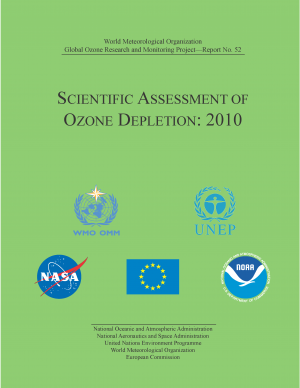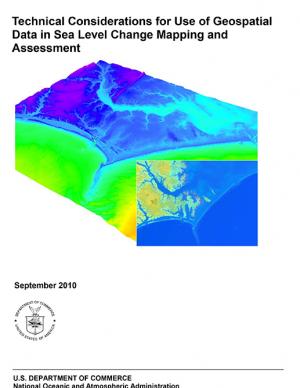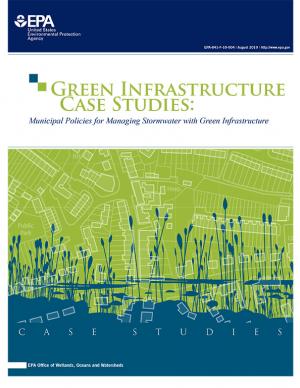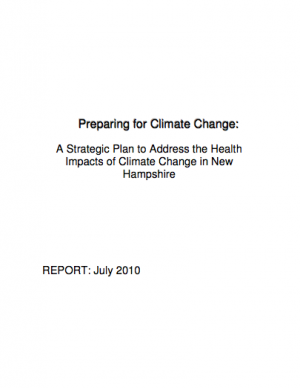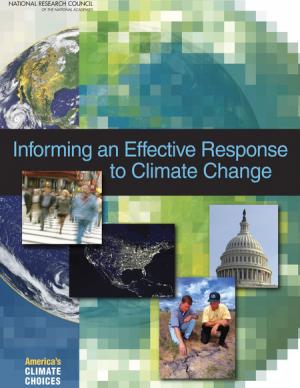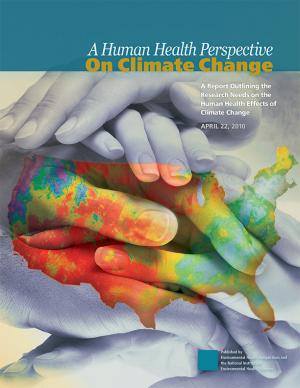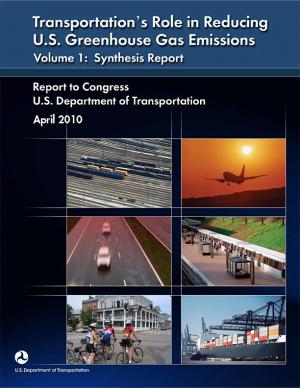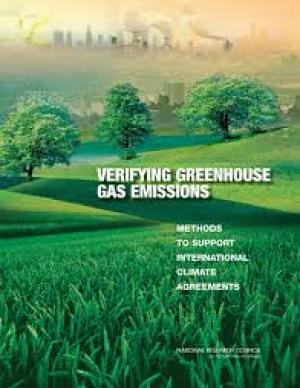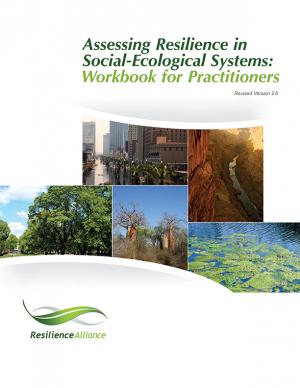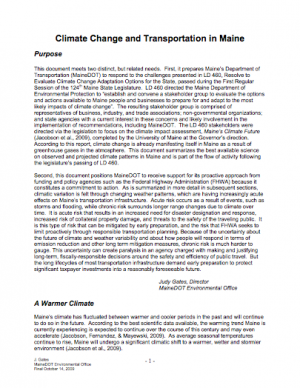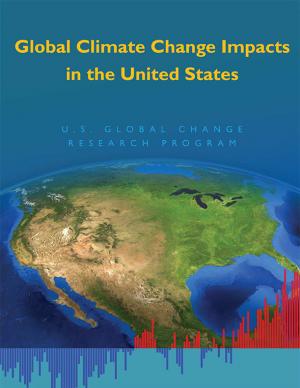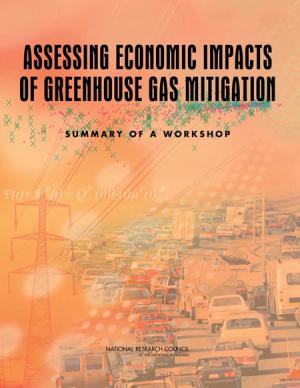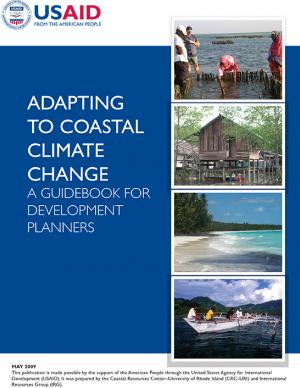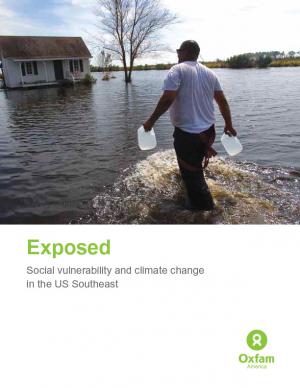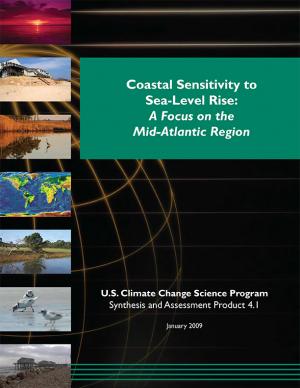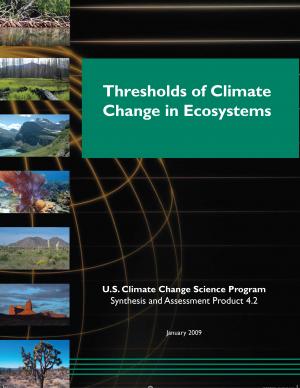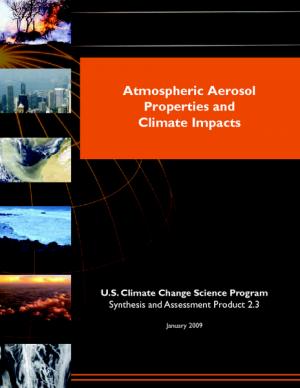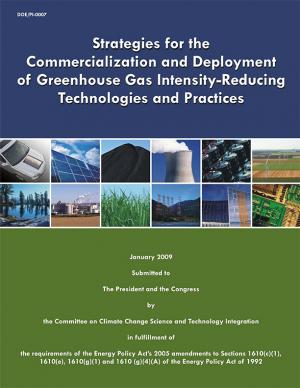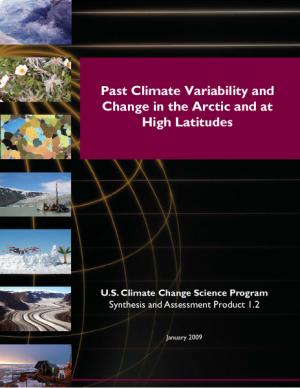Access a range of climate-related reports issued by government agencies and scientific organizations. Browse the reports listed below, or filter by scope, content, or focus in the boxes above. To expand your results, click the Clear Filters link.
The Plan's goals include reducing community-wide greenhouse gas emissions 10 percent below 1990 levels by 2020, reducing community-wide fossil fuel use 50 percent by 2030, and identifying strategies that will help the community adapt to climate change and rising fuel prices
This publication is intended to assist public health officials, practitioners, and other stakeholders in their efforts first to understand and then to prepare for drought in their communities. It provides information about how drought affects public health, recommends steps to help mitigate the health effects of drought, identifies future needs for research and other drought-related activities, and provides a list of helpful resources and tools.
This assessment of ozone depletion, produced by the World Meteorological Organization and the United Nations Environment Programme every four years since 1985, is the work of over 300 scientists. The 2010 report highlights advances in the understanding of the role greenhouse gases play in ozone alteration. It also includes updated information for policymakers, including ozone projections for the 21st century.
This guide was designed to help U.S. state and territorial coastal managers develop and implement adaptation plans to reduce the impacts and consequences of climate change and climate variability. It was written in response to a request from state coastal managers for guidance from NOAA on adaptation planning in the coastal zone.
Guidance for federal and state agencies and coastal planners for conducting sea level change assessments and mapping. The report is intended to provide technical guidance to agencies, practitioners, and coastal decision-makers seeking to use and/or collect geospatial data to assist with sea level change assessments and mapping products.
This report presents the common trends in how 12 local governments across the country developed and implemented stormwater policies to support green infrastructure. The local policies examined include interagency cooperation, enforcement and management issues, and integration with state and federal regulations. While a strong motivation for these policies and programs is innovation in stormwater management, many communities are moving past the era of single objective spending and investing in runoff reduction and stormwater management strategies that have multiple benefits. Green infrastructure approaches have a range of benefits for the social, environmental, and economic conditions of a community. Not only do these case studies include success stories for building a comprehensive green infrastructure program, but they also provide insight into the barriers and failures these communities experienced while trying to create a stormwater management system that includes more green infrastructure approaches.
This Needs Assessment report represents the initial step in creating a Strategic Plan for the state of New Hampshire to prepare for and address the public health impacts of climate change.
This volume in the National Research Council's America's Climate Choices series describes and assesses different activities, products, strategies, and tools for informing decision makers about climate change, including education and communication, and information systems and services for helping them plan and execute effective, integrated responses. Information and reporting systems discussed include climate services and a greenhouse-gas accounting system.
This report quantifies the outcomes of different stabilization targets for greenhouse gas concentrations using analyses and information drawn from the scientific literature. Although it does not recommend or justify any particular stabilization target, it does provide important scientific insights about the relationships among emissions, greenhouse gas concentrations, temperatures, and impacts. The report emphasizes the importance of 21st century choices regarding long-term climate stabilization, and is a useful resource for scientists, educators, and policy makers, among others.
This report, by a federal working group led by the National Institute of Environmental Health Sciences, highlights 11 key categories of diseases and other health consequences that are occurring or will occur due to climate change. The report provides a starting point for coordination of federal research to better understand climate’s impact on human health. The recommendations of the working group include research to identify who will be most vulnerable, and what efforts will be most beneficial.
This report, submitted to the U.S. Congress in April 2010, evaluates a range of strategies for reducing greenhouse gases from transportation, including introducing low-carbon fuels, increasing vehicle fuel economy, improving transportation system efficiency, aligning transportation planning and investments to achieve GHG reduction objectives, and pricing.
Agreements to limit emissions of greenhouse gases are the focus of international negotiations, and with such accords will come the need to accurately estimate these emissions, monitor their changes over time, and verify them with independent data. This report identifies strategic investments that could be made to both improve self-reporting and yield a capability to verify these estimates and reduce uncertainties about emissions to less than 10 percent.
These reports for U.S. coastal regions summarize land cover status in 2010 and land cover changes over the previous decade and a half (from 1996 to 2010). They provide an overview of key findings using reader-friendly maps and graphics. All change information was produced as part of NOAA’s Coastal Change Analysis Program (C-CAP) land cover mapping efforts. Reports available: National Overview, Great Lakes, Gulf Coast, Northeast, Southeast, and West Coast.
The Alaska Climate Change Sub-Cabinet was established on September 14, 2007, to advise the state's governor on creating a comprehensive Alaska Climate Change Strategy. This document contains the recommendations of the Adaptation Advisory Group, which was charged with evaluating and developing options to adapt to climate change. The report also includes background about projected climate impacts on Alaska.
The workbook for practitioners uses strategic questions and activities to assess resilience in social-ecological systems. The approach involves constructing a conceptual model of a system that includes resources, stakeholders, and institutions, and identifies potential thresholds between alternative systems states in order to provide insight into factors that build or erode a system's resilience. A resilience assessment can help with developing strategies for coping with uncertainty and change.
The state of New Jersey enacted the Global Warming Response Act on July 2007, calling for a reduction in greenhouse gas emissions to 1990 levels by 2020 and further reduction of emissions to 80 percent below 2006 levels by 2050. This report was given to the Governor, Treasurer, and State Legislature in compliance with the Global Warming Response Act.
This document sets forth a plan, required by Hawai'i's 2007 Session Laws, to achieve the maximum practically and technically feasible reductions in greenhouse gas emissions to or below 1990 levels of emissions by 2020.
This strategy provides initial guidance on actions Virginia’s conservation community can implement immediately to enhance the conservation of wildlife and habitats in the face of climate change, even as more comprehensive adaptation strategies are developed. Conservation strategies include specific actions for conserving species and habitats, developing new data and climate modeling resources, and implementing new outreach efforts related to climate change.
This document meets two distinct, but related, needs. First, it prepares Maine’s Department of Transportation (MaineDOT) to respond to the challenges presented in Maine's LD 460, Resolve to Evaluate Climate Change Adaptation Options for the State. Second, this document positions MaineDOT to receive support for its proactive approach from funding and policy agencies such as the Federal Highway Administration because it constitutes a commitment to action.
The sixth edition of a report card to the American public on the biological health of U.S. living marine resources. The report includes updates on major fisheries and marine resources, as well as feature articles on fisheries science, coral, and cooperative and proactive approaches to the Endangered Species Act.
This report is the Second National Climate Assessment, summarizing the science and impacts of climate change on the United States. The report discusses climate-related impacts for various societal and environmental sectors and regions across the nation. It is an authoritative scientific report written in plain language, with the goal of better informing public and private decision making at all levels.
Reliable estimates of the costs and benefits to the U.S. economy for various emissions reduction and adaptation strategies are critical to federal climate change research and development portfolio planning and investment decisions. At the request of the U.S. Department of Energy, the National Academies organized a workshop to consider these issues. The workshop participants discussed three dimensions: policy, analysis, and economics. They focused on (i) policymakers' informational needs, (ii) models and other analytic approaches to meet these needs, (iii) important economic considerations, including equity and discounting, and (iv) opportunities to enhance analytical capabilities and better inform policy.
This report provides a detailed treatment of climate concerns in coastal areas, and proposes an approach for assessing vulnerability to climate change and climate variability, developing and implementing adaptation options, and integrating options into programs, development plans, and projects at the national and local levels. This is known as a vulnerability and adaptation, or V&A, approach.
King County in Washington State has established a comprehensive program to prepare for climate change, and many of the tools and strategies that King County has employed can be applied in other communities. This memorandum from the King County Office of Strategic Planning and Performance Management, published by the American Planning Association, describes strategies developed in King County to direct local government efforts to address climate change.
The Michigan Climate Action Council (MCAC) was created on November 14, 2007, by Governor Jennifer Granholm. Governor Granholm charged the MCAC with producing a greenhouse gas emissions inventory and forecast, developing this comprehensive Climate Action Plan with recommended greenhouse gas reduction goals and potential actions to mitigate climate change in various sectors of the economy, and advising state and local governments on measures to address climate change.
This Climate Action Plan was developed for New Hampshire by the Climate Change Policy Task Force, initiated by Governor John Lynch in 2008. The plan aims to achieve the greatest feasible reductions in greenhouse gas emissions while also providing the greatest possible long-term economic benefits to New Hampshire.
Historically, studies about climate hazards and social vulnerability have been conducted in separate silos. The Social Vulnerability Index (SoVI) is the first study of its kind to examine both the potential impact of natural hazards and which populations are most likely to be negatively affected. This research, commissioned by Oxfam America, includes a series of layered maps that depict social and climate change-related hazard vulnerability. The maps assist in identifying hotspots in the U.S. Southeast, which are at significant risk in the face of four particular climate change-related hazards: drought, flooding, hurricane force winds, and sea level rise. The specific region of focus is the 13-state region of the US Southeast: Alabama, Arkansas, Florida, Georgia, Kentucky, Louisiana, Maryland, Mississippi, North Carolina, South Carolina, Tennessee, Texas, and Virginia. Roughly 80 percent of all U.S. counties that experience persistent poverty (defined as a county in which at least 20 percent of the population experiences poverty for three decades or more) lie in this region.
A collection of case studies and information about how coastal communities can plan for and adapt to climate change. These resources represent a national guide for how coastal communities can plan and adapt. Case study issues range from coastal managers addressing sea level rise in Rhode Island to coral bleaching caused by rising sea temperatures in Florida.
This report is designed to help Oregon's local decision makers prepare adaptation plans and state agencies to coordinate their infrastructure plans with local adaptation initiatives.
This Synthesis and Assessment Product (SAP), developed as part of the U.S. Climate Change Science Program, examines potential effects of sea level rise from climate change during the twenty-first century, with a focus on the mid-Atlantic coast of the United States. Using scientific literature and policy-related documents, the SAP describes the physical environments; potential changes to coastal environments, wetlands, and vulnerable species; societal impacts and implications of sea level rise; decisions that may be sensitive to sea level rise; opportunities for adaptation; and institutional barriers to adaptation. This SAP discusses ways natural and social science research can improve understanding and prediction of potential impacts to aid planning and decision making.
A tutorial for the climate analysis and decision-making communities on current best practices in describing and analyzing uncertainty in climate-related problems. Uncertainty is ubiquitous. Of course, the presence of uncertainty does not mean that people cannot act.
An assessment of the potential for abrupt state changes or regime shifts in ecosystems in response to climate change. Better understanding of sudden changes to ecosystems, and the goods and services they provide, is extremely important if natural resource managers are to succeed in developing adaptation strategies.
This Synthesis and Assessment Product (SAP), developed as part of the U.S. Climate Change Science Program, offers a detailed look at global distributions and properties of airborne particles known as "aerosols." The report examines the various ways in which aerosols influence climate, and the uncertainties in our ability to observe and measure these particles' impact on the climate system.
This report systematically examines the market readiness of key technologies important to meeting climate change mitigation goals and assesses the barriers and business risks impeding their progress and greater market application. The report was sponsored by the U.S. Climate Change Technology Program, a multi-agency group led by the U.S. Department of Energy.
Average temperatures in the Arctic have increased at almost twice the rate of the planet as a whole. Such temperature changes have been accompanied by shrinking sea ice, melting ice and permafrost on land, and widespread impacts to land and ocean ecosystems. This Synthesis and Assessment Product, developed as part of the U.S. Climate Change Science Program, offers recommendations for future research in this area.
This report presents the projected impacts of climate change on the Rogue River Basin of southwest Oregon.



